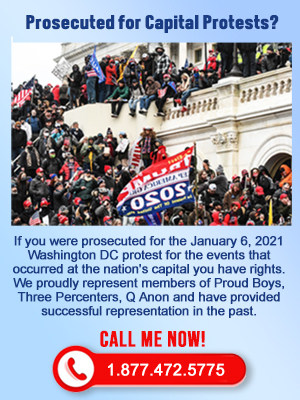
In the mid-1980s, new federal laws were passed that provided for mandatory minimum sentences for many drug offenses. Many legislatures in the US adopted these harsher sentences to fight drug offenses.
The idea behind these laws was to punish large drug dealers and traffickers with tough prison sentences. The federal system led the way when it passed the Anti-Drug Abuse Act of 1986, and the Anti-Drug Abuse Act of 1988. These laws created new, severe mandatory prison sentences for drug offenses. The result was to remove much of the discretion from the judge giving the sentence. Typical mandatory minimum sentences for many drug crimes became 5-10 years, even for relatively low level drug crimes.
In recent years, these mandatory minimum sentences for drugs has caught up many small time drug dealers and users. Many of them have been given 5-10 year prison sentences for relatively minor crimes. This is one reason that Attorney General Eric Holder has been calling for changes to the federal drug sentencing guidelines. This has caused the prison population to soar.

This relatively high number of minor offenders being caught up in these mandatory sentencing laws can be seen in US federal drug offense data.
Mandatory Minimum Sentence Statistics for Drugs and Other Crimes
In 2010, one study found that drug, firearms and immigration offenses were 82% of the 73,239 cases in that study. About 25% of those offenses involved a mandatory minimum sentence. Also, in 2010, 77% of the 19,896 who were convicted of an offense with a minimum sentence were convicted of various drug trafficking offenses.

Drug offenses are the largest part of the mandatory minimum sentence caseload in the US. The most common drugs involved in these cases were:
- Marijuana – 26%
- Cocaine – 23%
- Crack cocaine – 20%
- Methamphetamine – 17.6%
- Heroin – 6.6%
- Other drugs – 6.4%
The use of mandatory minimum sentences will vary a great deal depending upon the drug in the case. In 2010, a mandatory minimum penalty was used in 83% of cases that involved methamphetamine. In marijuana cases, the mandatory minimum sentence was done in only 45% of cases. For PCP and LSD, it was only 11.4%.
Inconsistent Policies on Mandatory Minimum Sentences for Drugs
In a recent study, interviews with defense attorneys and prosecutors across 13 districts in the US found very different practices regarding charging some offenses that will trigger mandatory minimum sentences. These differences were found to be very strong regarding section 851 of title 21 of the United States Code for drug offenses for those with prior convictions. This would usually double the mandatory minimum sentence. In some districts, the 851 filing was done in almost all drug cases where there was a prior conviction. But in other districts, it hardly was ever filed.
Attorney General Reduces Sentencing for Some Drug Offenders
 In summer of 2013, Attorney General Eric Holder announced that lower level, nonviolent drug offenders that were not tied to gangs or large drug organizations would not be charged in a way that would impose mandatory minimum sentences. Holder argued that the current cycle of poverty, criminality and incarceration for minor offenses traps too many Americans in prison and is weakening American communities.
In summer of 2013, Attorney General Eric Holder announced that lower level, nonviolent drug offenders that were not tied to gangs or large drug organizations would not be charged in a way that would impose mandatory minimum sentences. Holder argued that the current cycle of poverty, criminality and incarceration for minor offenses traps too many Americans in prison and is weakening American communities.
Holder called for changes in how the Justice Department judges drug cases. The idea is to reserve severe prison sentences for serious drug offenses or for those involving violence. Holder directed US attorneys around the US to come up with local guidelines to determine when federal drug charges should be filed.
Relief from Mandatory Minimum Sentences for Some Drug Offenders
In the last few years, some minor drug offenders have started to see relief from minimum mandatory sentences for drugs. In 2010, more than 50% of drug offenders in the US that were convicted of a drug offense that had a mandatory minimum sentence did get relief from the minimum penalty. About ¼ of drug offenders got sentence relief through a legal review process. Others, about 19%, received a lighter sentence for providing help to the government to prosecute drug crimes.
White offenders were found to benefit from sentence relief 64% of the time, with blacks getting relief 39% of the time.
The general direction of the US legal system today on drug crime is to focus on incarcerating for long periods the most serious drug offenders, and those who commit violence during their drug crimes.
